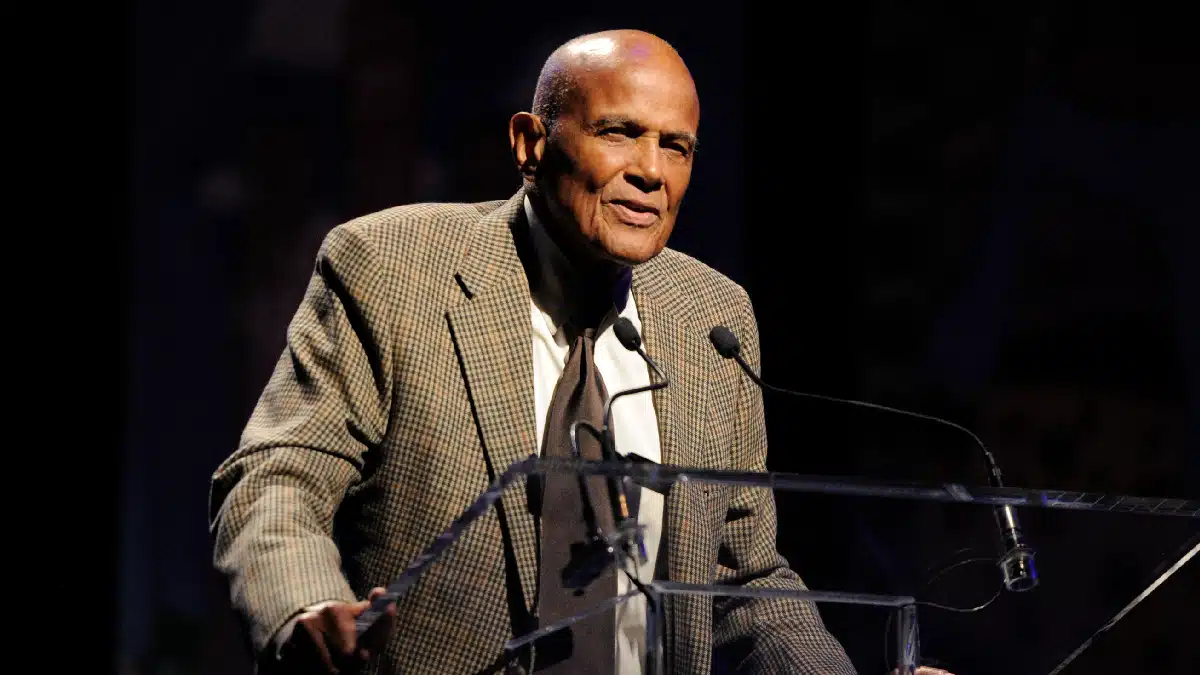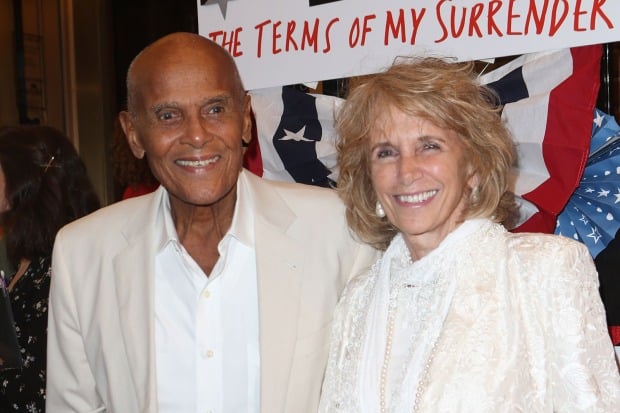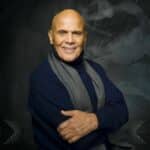Harry Belafonte, known as the “King of Calypso,” established himself as music royalty with his chart-topping tunes. He died on April 25, 2023, from congestive heart failure at 96. The activist left behind a massive amount of money and an excellent reputation. Scroll down to learn more about his money and long and successful work.
Harry Belafonte: Early Life Details
Harry Belafonte was born in New York City on March 1, 1927, as Harold George Bellanfanti Jr. His parents, Harold Sr. and Melvine, were both from Jamaica. Belafonte lived with his grandma in Jamaica when he was young. He went to Wolmer’s Schools there for his elementary schooling. He went to George Washington High School when he returned to New York. Then, during World War II, Belafonte joined the US Navy. Later, when he saw the American Negro Theatre and met star Sidney Poitier, he became interested in the arts. Belafonte studied acting at the New School’s Dramatic Workshop and worked with the American Negro Theatre at the end of the 1940s.

Harry Belafonte: Music Career
Belafonte sang in clubs to make money for his acting lessons. He finally became a music artist when, in 1949, he signed with the Roost record label. With his friend Millard Thomas, he played his first show at the Village Vanguard jazz club in Greenwich Village. Belafonte signed with RCA Victor in 1953 and would stay with the label for the next 20 years. In 1956, with his studio record “Calypso,” he broke into the mainstream. It was the first album in the world to sell more than a million copies in a single year. Also, “Day-O (Banana Boat Song),” which became Belafonte’s signature song, was first heard on this record. The other hit song from “Calypso” was “Jamaica Farewell.”
Belafonte also sang blues, folk, church, show tunes, and standards not in the calypso style. In 1959 and 1960, he produced two live albums recorded at Carnegie Hall. On the 1959 album, he did a famous cover of the Jewish folk song “Hava Nagila.” After that, Belafonte made records like “Jump Up Calypso,” “Midnight Special,” “Streets I Have Walked,” and “Ballads, Blues, and Boasters.” He also worked with South African singer, songwriter, and activist Miriam Makeba, with whom he made the 1965 Grammy-winning album “An Evening with Belafonte/Makeba.”
Harry Belafonte: Further Music Career and Retirement
Belafonte’s last calypso album came out in 1971. It was called “Calypso Carnival.” Throughout the rest of the decade, his recording business slowed down, and he went on tours worldwide. Belafonte’s singing career took off again in the mid-1980s when he joined the charity supergroup USA for Africa. He also wrote the music for the musical movie “Beat Street.” After getting a record deal with EMI, Belafonte released “Paradise in Gazankulu,” his first album of new songs in over a decade. This would be Belafonte’s last record, and it has protest songs against Apartheid in South Africa. Belafonte kept performing through the 1990s and into the early 2000s. His previous show was a benefit for the Atlanta Opera in late 2003. He stopped singing for a living not long after that.
Check out the posts below if you’re interested in reading more about the wealth of other famous celebrities:
- What Is Len Goodman’s Net Worth At The Time Of His Death?
- Moonbin’s Net Worth: A Look At The Wealth Of K-Pop Star And Astro Member
- What Was Ahmad Jamal’s Final Net Worth? At The Time Of His Death!
What Was Harry Belafonte’s Net Worth At The Time Of His Death?
At the time of his death, American singer, actor, and social activist Harry Belafonte was worth $30 million.
| Name | Harry Belafonte |
| Net Worth( 2023) | $30 Million Dollars |
| Profession | American Singer |
| Date of Birth | 1 March 1927 |
| Age | 96 years old |
| Height | 182 cm (5 Feet 11 Inches) |
| Weight | (160 lbs) 73 Kg |
| Birthplace | Harlem, New York, United States |
| Nationality | American |
Harry Belafonte: Activism And Charity
Paul Robeson, an actor, singer, and civil rights fighter, was a big inspiration for Belafonte as a political and humanitarian activist. Robeson was also a mentor to Belafonte. In the 1950s and 1960s, Belafonte was one of the most well-known civil rights leaders. He was also one of Martin Luther King Jr.’s closest friends. He paid for the Freedom Rides in 1961 and helped plan the March on Washington in 1963, among other things. Belafonte was also very involved in the fight against apartheid in South Africa.
In 1985, Belafonte helped make the charity song “We Are the World,” which won a Grammy Award. He also sang at the Live Aid event. He was named a UNICEF Goodwill Ambassador two years after that. Belafonte went on to help good causes worldwide, especially in Africa, where he worked with many projects to bring attention to things like child poverty and HIV/AIDS.
Harry Belafonte: Personal Life Details
Belafonte had four children of his own and loved being a grandfather. During his marriage to Marguerite Byrd, he had his first two children, Adrienne and Shari. After he and his first wife split up in 1957, Belafonte married Julie Robinson and had Gina and David.
The singer of ‘Jump in the Line’ divorced his second wife in 2004 and married his third wife, Pamela Frank, in 2008. They stayed married until Belafonte passed away.

Harry Belafonte: Property
In 1982, Harry bought a 3.3-acre piece of land on the island of St. Martin in the Caribbean. In September 2005, he sold this house for $2.2 million.
Follow us on Twitter and keep up on all the newest posts for more data on your favorite celebrities income, assets, and other financial details.

